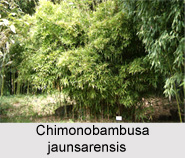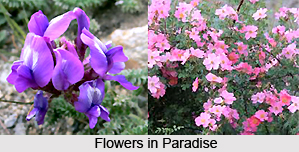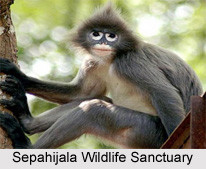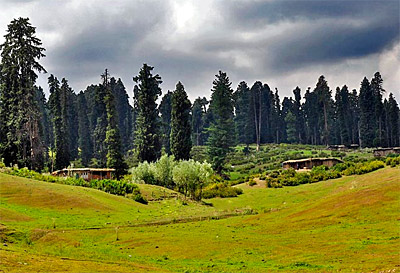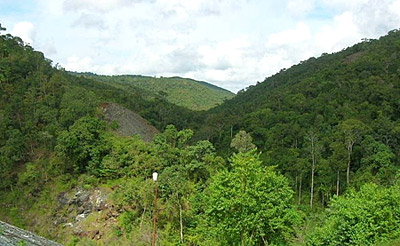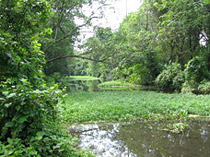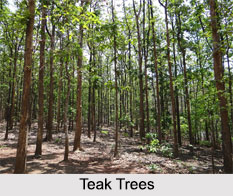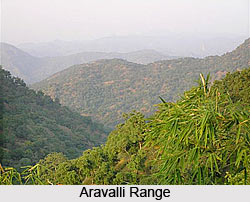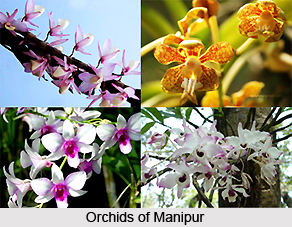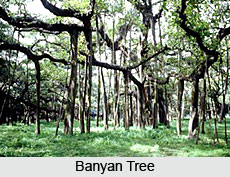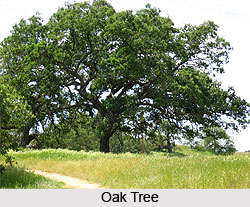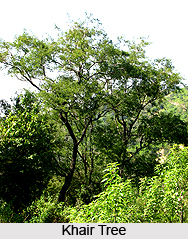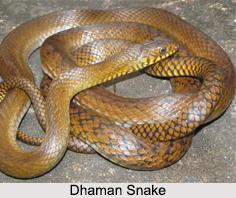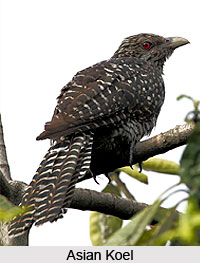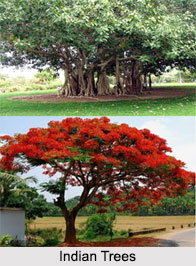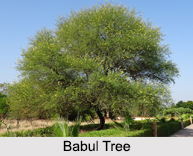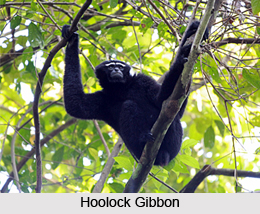 Hoollongapar Gibbon Sanctuary is located in Jorhat district of the Indian state of Assam. It was formerly known as Gibbon Wildlife Sanctuary or Hollongapar Reserve Forest. The sanctuary covers an area of 20.98 square kilometres. It has been named after the only ape, Hoolock Gibbon, found in India, a major population of which dwells in the sanctuary. Hoollongapar Gibbon Sanctuary is situated amongst semi-evergreen forests and evergreen patches amidst tea gardens and human settlements. The sanctuary was officially notified in the year 1997. Visitors from far off places visit this sanctuary.
Hoollongapar Gibbon Sanctuary is located in Jorhat district of the Indian state of Assam. It was formerly known as Gibbon Wildlife Sanctuary or Hollongapar Reserve Forest. The sanctuary covers an area of 20.98 square kilometres. It has been named after the only ape, Hoolock Gibbon, found in India, a major population of which dwells in the sanctuary. Hoollongapar Gibbon Sanctuary is situated amongst semi-evergreen forests and evergreen patches amidst tea gardens and human settlements. The sanctuary was officially notified in the year 1997. Visitors from far off places visit this sanctuary.
History of Hoollongapar Gibbon Sanctuary
In the year 1881, the region was declared as a Reserve Forest and was named after the Hollong tree which dominated the vegetation of the region. It was an integral part of the foothill forests of the Patkai mountain range and used to connect a large forest of Nagaland. Gradually owing to the increasing human settlements the forest became fragmented. Later many more plant species were added to the forest through artificial regeneration which resulted into substantial biodiversity. In 1900s more forest area were added to the region but it still constituted five distinct segments. On 30th July 1997, the forest was declared as Gibbon Wildlife Sanctuary while on 25th May 2004 it was renamed as Hoollongapar Gibbon Sanctuary.
Flora of Hoollongapar Gibbon Sanctuary
Hoollongapar Gibbon Sanctuary mostly comprises evergreen forest. Several canopy layers can be observed here. Hollong tree dominates the upper canopy of the forest and also includes species like Hingori, Udal, Bhelu, Sopas, Amari etc. The middle canopy is dominated by Nahar trees along with Otenga, Sassi, Selleng, Morhal, Bonbogri, Ful Gomari and other species. Evergreen shrubs and herbs constitute the lower canopy which includes species like Kaupat, Tora, Houka bet, Jati bet, Jengu, Dolu bamboo and many more.
Fauna of Hoollongapar Gibbon Sanctuary
The sanctuary houses a variety of animals and birds. Western Hoolock Gibbon, the only apes of India are found here. It is also the home to the nocturnal primate of North East India, Bengal Slow Loris. The different types of mammals that found here are Elephant, Leopard, Tiger, Pangolin, Assamese Macaque, Pig Tailed Macaque, Rhesus Macaque, Stump Tailed Macaque, Capped Langur, Jungle Cat, Indian Civet, Giant Squirrel, Barking Deer, Sambar, Wild Pig, Squirrels. The sanctuary also houses about 219 species of birds like Indian Pied Horn Bill, Osprey, Hill Myna, Kalij Pheasant etc. Apart from these are many other reptiles like Indian Python, Common Monitor Lizard, Indian Tent Turtle and Indian Cobra in the sanctuary.
Visiting Information
Hoollongapar Gibbon Sanctuary is best visited during the months of June to July and February to March. It can be reached by road from Mariani Railway Junction. It is 25 kilometres away from Rowriah Airport (Jorhat) 20 kilometres from Jorhat town.
